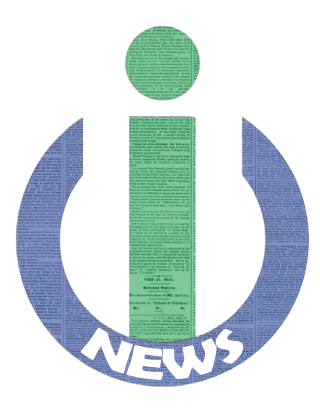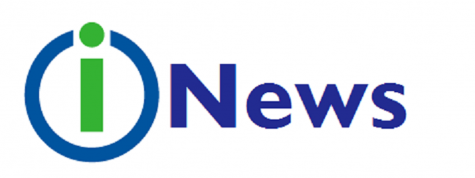Although a state law mandates that financial literacy be taught in high school economics classes, New York City public school graduates are largely leaving the classroom without a good grasp of fundamental financial skills. These topics—saving, debt, credit, taxes, and investing—are often addressed briefly or not at all, and as a result, New York State earned a “D” in teaching financial literacy in 2023. Elijah Morehouse, a Manhattan iSchool senior, summarized it: “I’ve never been taught how to do taxes.” His problem is shared by the majority of students graduating in recent years.
One financial student survey at the iSchool found that 88% of students plan to save money in a savings account with low interest, with only 4% planning to invest the majority of their savings in index funds or stocks. More to the point, 85% of them rated their overall degree of confidence in being capable of handling financial independence as “low” or “medium.”
A May 2024 test by the New York Financial Educators Council (NYFEC) showed that New York teenagers aged 15–18 averaged a score of 64.88% on a financial literacy test, with only 52.23% earning a passing score of 70% or higher. And A Junior Achievement survey found that while 68% of teens nationwide wanted to take a financial literacy course, only 31% reported having access to one. This highlights a national trend that was historically reflected in New York’s limited offerings. These figures reflect a widening gap between what students are being asked to do financially and what they are being educated to accomplish.
The iSchool, unlike some, does offer multiple finance classes however they are not mandatory so the the effect that taking those classes or not doing so can have is clear through interviewing, many students miss because they don’t realize how relevant the content is. Elijah was never enrolled in any financial classes, despite being curious and motivated. “I just haven’t taken any personal finance classes or any classes that relate to the way that I spend my money,” Elijah replied.
Justin Gillespie, a fellow student who signed up for the school’s personal finance course, recommended it to Elijah. Ms. Turso’s class offered real, hands-on guidance in managing funds. “We didn’t just memorize definitions, we actually got to learn how to do things like fill out W-4s and budget for monthly expenses,” Justin explained. “I even simulated a tax filing, which was intimidating at first but with the help of Ms. Turso I now know what it takes.” He referred to the experience as “eye-opening,” especially when compared to how most classes seem to be disconnected from actual life outside of school. “It made me realize how much I didn’t know, but how simple it can be when somebody explains it to you.
Although the course lasted for only a quarter, the effect will be carried for much longer. “Previously, I was anxious about money, as if I’d never master it. Now, I have a better sense of control over things. I know how to start a budget, track spending, and plan ahead,” he explained. That sort of confidence is what many teachers and city leaders would like to hear more of in the years to come.
Noticing the city-wide financial literacy gap, Mayor Eric Adams initiated the Financial Literacy for Youth (FLY) program to offer organized, affordable financial education to all NYC public school students by 2030. Beginning in June 2025, the program will first roll out across 15 districts and deploy trained financial counselors in schools to support teachers, students, and even families.
“Too many students graduate understanding the difference between a base and an acid but not how to balance a budget or avoid credit card debt,” said Mayor Adams during the press conference. “That stops with our administration. FLY will ensure that every student graduates from high school with the financial literacy they must succeed in the 21st century.”
These guidance counselors won’t just attend courses—they’ll also provide workshops, one-on-one assistance, and culturally relevant materials to address the varied fiscal realities of NYC students. Elijah said, “If I had this kind of guidance when I was younger, I would not feel so unprepaired.” While the program is still developing, Justin’s experience already offers a powerful look at what can be achieved when financial education is provided.
The most powerful thing about his experience is not that he was an expert overnight, but that he felt more confident and curious about money, two things which can transform one’s entire financial life. “I’m not perfect with money, and I’m still learning,” he said. “But I’m not afraid of it anymore.”
His transformation is a reminder that financial literacy doesn’t require a complicated remodeling of the education system. Sometimes, one well-designed, engaging class can be enough to flip the switch, to turn fear into understanding, confusion into confidence. Justin’s takeaway is clear: “If every student got the chance to take a class like this, we’d all be in a much better place. It shouldn’t be optional. This is something we all need, no matter what we do after high school.”
As the city prepares to launch the FLY program, Justin’s success is a prime example of what can be accomplished when education is relevant to life. It demonstrates that you don’t require decades of coursework to leave a mark just one solid teacher, one hands-on class, and the possibility that every student should be able to graduate from school prepared for the world.
The polar difference between Elijah’s and Justin’s answers was clear evidence that a financial education in school, even a quarter long class like personal finance taught by Ms. Turso, can play a pivotal role in a student’s knowledge of finance, a lesson which they will carry with them throughout their lives, eventually potentially providing them with a comfortable retirement.
Finance is arguably the most important and relevant subject to be educated on and the New York City “Financial Literacy for Youth” (FLY) initiative offers a solution by providing students with the education they need. This move targets the significant knowledge gap that has left many graduates without the skills to manage crucial financial decisions.








